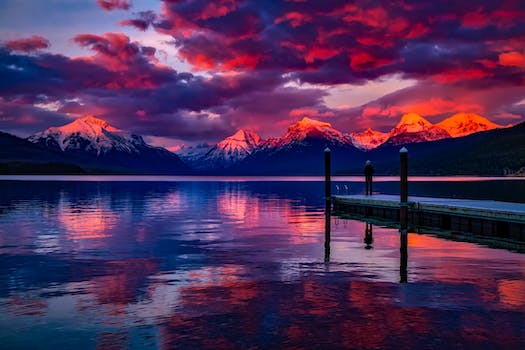-
Table of Contents
- Introduction
- The Rise of Dark Tourism: Exploring the Benefits and Challenges of Visiting Historical and Mysterious Sites
- Exploring the Dark Side of History: Visiting Sites of Conflict and Tragedy
- The Psychology of Dark Tourism: Understanding the Appeal of Visiting Sites of Death and Destruction
- The Ethics of Dark Tourism: Examining the Impact of Visiting Sites of Suffering and Oppression
- The Future of Dark Tourism: Exploring New Ways to Engage with Historical and Mysterious Sites
- Conclusion
“Discover the Dark Side of History with Dark Tourism – Uncover the Mysteries of the Past!”
Introduction
Dark tourism is a type of tourism that involves visiting sites associated with death, tragedy, and suffering. It is a form of travel that has become increasingly popular in recent years, as people seek to explore the darker side of history and the mysterious sites that have been left behind. From concentration camps to abandoned ghost towns, dark tourism offers a unique opportunity to explore the darker side of the past and gain a deeper understanding of the events that have shaped our world. This article will explore the history of dark tourism, the motivations behind it, and the ethical considerations that come with it.
The Rise of Dark Tourism: Exploring the Benefits and Challenges of Visiting Historical and Mysterious Sites

The concept of dark tourism has been gaining traction in recent years, as more and more people are drawn to the mysterious and often macabre sites associated with death, tragedy, and other dark events. From the ruins of Auschwitz to the eerie catacombs of Paris, dark tourism offers a unique opportunity to explore the darker side of history and gain a deeper understanding of the human experience.
While dark tourism can be a powerful and meaningful experience, it also comes with its own set of challenges. For starters, it can be difficult to find the right balance between respect and curiosity when visiting these sites. It’s important to remember that these places are often associated with great suffering and loss, and it’s important to approach them with sensitivity and respect. Additionally, it’s important to be aware of the potential for exploitation, as some dark tourism sites have become popular tourist attractions and can be subject to commercialization.
Despite these challenges, there are many benefits to dark tourism. Visiting these sites can provide a unique opportunity to learn about history and gain a deeper understanding of the human experience. It can also be a powerful way to connect with the past and gain a greater appreciation for the struggles and triumphs of those who came before us. Additionally, dark tourism can be a powerful tool for raising awareness about important issues and inspiring people to take action.
Ultimately, dark tourism can be a powerful and meaningful experience, but it’s important to approach it with respect and sensitivity. By doing so, we can ensure that these sites remain meaningful and powerful places of learning and reflection.
Exploring the Dark Side of History: Visiting Sites of Conflict and Tragedy
Exploring the dark side of history can be a powerful and meaningful experience. Visiting sites of conflict and tragedy can help us to better understand the past and gain a deeper appreciation for the present. From battlefields to concentration camps, these sites offer a unique opportunity to reflect on the consequences of war and oppression.
For those interested in exploring the dark side of history, there are a number of sites around the world that offer a glimpse into the past. In Europe, the battlefields of World War I and II are a sobering reminder of the horrors of war. The trenches, memorials, and cemeteries of these sites are a powerful reminder of the sacrifices made by those who fought and died in these conflicts.
In Asia, the sites of the Japanese occupation of China and Korea are a stark reminder of the brutality of war. The Nanjing Massacre Memorial Hall in China and the Korean War Memorial in South Korea are two of the most powerful sites to visit. These sites offer a glimpse into the suffering of the people who lived through these conflicts and the lasting impact they had on the region.
In the United States, the sites of the Civil War and the Trail of Tears are a reminder of the tragedy of slavery and the displacement of Native Americans. The battlefields of Gettysburg and Antietam are a powerful reminder of the cost of the Civil War, while the Trail of Tears National Historic Trail offers a glimpse into the suffering of the Native Americans who were forcibly removed from their homelands.
Visiting sites of conflict and tragedy can be a difficult and emotional experience. However, it is an important part of understanding our history and appreciating the present. By exploring the dark side of history, we can gain a deeper understanding of the past and a greater appreciation for the present.
The Psychology of Dark Tourism: Understanding the Appeal of Visiting Sites of Death and Destruction
Dark tourism is a growing phenomenon that has been gaining more attention in recent years. It involves visiting sites of death and destruction, such as concentration camps, battlefields, and other sites of tragedy. While it may seem strange to some, dark tourism is a popular form of travel for many people. But why do people find these sites so appealing?
The appeal of dark tourism can be explained by a variety of psychological factors. For some, it is a way to connect with history and gain a deeper understanding of the events that occurred at these sites. It can also be a way to pay respect to those who suffered and died at these locations. Additionally, dark tourism can be seen as a form of escapism, allowing people to temporarily escape from their everyday lives and experience something different.
Another factor that contributes to the appeal of dark tourism is the feeling of awe and wonder that it can evoke. Visiting sites of death and destruction can be a powerful reminder of the fragility of life and the importance of cherishing the present moment. It can also be a way to gain perspective on one’s own life and appreciate the good things that we have.
Finally, dark tourism can be seen as a form of self-expression. By visiting these sites, people can express their curiosity and interest in history, as well as their own personal values and beliefs. It can also be a way to challenge one’s own beliefs and values, as well as to gain a better understanding of the world.
Overall, dark tourism is an increasingly popular form of travel that can be explained by a variety of psychological factors. By understanding the appeal of dark tourism, we can gain a better appreciation of why people choose to visit these sites and what they hope to gain from the experience.
The Ethics of Dark Tourism: Examining the Impact of Visiting Sites of Suffering and Oppression
Dark tourism is a growing trend in the travel industry, with more and more people visiting sites of suffering and oppression. While some argue that dark tourism can be a powerful way to learn about history and gain a greater understanding of the world, others are concerned about the ethical implications of visiting such sites. In this blog post, we will explore the ethical considerations of dark tourism and examine the impact of visiting sites of suffering and oppression.
First, it is important to consider the motivations behind dark tourism. While some people may be drawn to dark tourism out of a genuine interest in learning about history and gaining a greater understanding of the world, others may be motivated by a morbid curiosity or a desire for sensationalism. It is important to be aware of these motivations and to ensure that dark tourism is not used as a form of entertainment or exploitation.
Second, it is important to consider the impact of dark tourism on the local community. Visiting sites of suffering and oppression can be a traumatic experience for those who live in the area, and it is important to be respectful and sensitive to their feelings. It is also important to consider the economic impact of dark tourism, as some communities may rely on tourism for their livelihood.
Finally, it is important to consider the impact of dark tourism on the individual. Visiting sites of suffering and oppression can be a powerful and emotional experience, and it is important to be aware of the potential psychological effects. It is also important to be aware of the potential for desensitization, as repeated exposure to such sites can lead to a diminished emotional response.
In conclusion, dark tourism can be a powerful way to learn about history and gain a greater understanding of the world. However, it is important to consider the ethical implications of visiting sites of suffering and oppression, and to be aware of the potential impact on the local community, the individual, and the motivations behind dark tourism.
The Future of Dark Tourism: Exploring New Ways to Engage with Historical and Mysterious Sites
Dark tourism has been around for centuries, but in recent years, it has become increasingly popular. From visiting the sites of infamous battles to exploring abandoned buildings, dark tourism offers a unique way to engage with history and mystery. As the industry continues to grow, it is important to consider how we can make dark tourism more engaging and accessible.
One way to make dark tourism more engaging is to focus on storytelling. By providing visitors with a narrative, they can gain a deeper understanding of the history and significance of the sites they are visiting. This could be done through audio tours, interactive exhibits, or even virtual reality experiences. By providing visitors with a more immersive experience, they can gain a better understanding of the sites they are visiting and the stories behind them.
Another way to make dark tourism more accessible is to focus on education. By providing visitors with educational materials, they can gain a better understanding of the history and significance of the sites they are visiting. This could be done through lectures, workshops, or even online courses. By providing visitors with a more comprehensive understanding of the sites they are visiting, they can gain a better appreciation for the history and mystery of the sites.
Finally, it is important to consider how technology can be used to make dark tourism more engaging. By utilizing virtual reality, augmented reality, and other technologies, visitors can gain a more immersive experience. This could be done through interactive exhibits, virtual tours, or even interactive games. By utilizing technology, visitors can gain a more comprehensive understanding of the sites they are visiting and the stories behind them.
As dark tourism continues to grow, it is important to consider how we can make it more engaging and accessible. By focusing on storytelling, education, and technology, we can create a more immersive and comprehensive experience for visitors. By doing so, we can ensure that dark tourism remains an engaging and educational experience for all.
Conclusion
Dark tourism is an interesting and unique way to explore historical and mysterious sites. It allows travelers to gain a deeper understanding of the past and to experience the unknown. It can be a powerful way to learn about history and to gain a greater appreciation for the world around us. While it can be a bit unsettling at times, it can also be a rewarding and enlightening experience. Ultimately, dark tourism is a great way to explore the world and to gain a better understanding of the past.
















